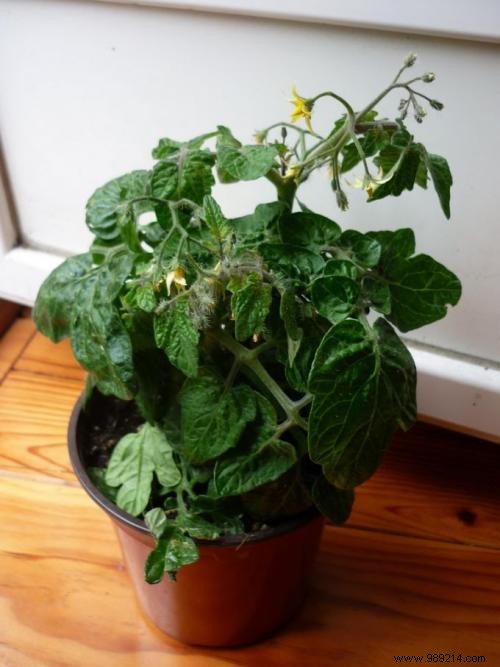
Living in town and having a vegetable garden on your balcony is possible!
It's a great way to save money on grocery shopping and eat healthier.
If you like to take the time to grow your vegetables, the idea of creating your own vegetable garden has probably crossed your mind.
The problem is that living in the city, you don't always have a garden.
Fortunately, there is a solution. Just grow your vegetables, in pots, on your tiny balcony.

To practice,we start by cultivating some aromatic plants such as thyme, chives or mint.
Very simple to maintain, these species require very little maintenance and water.
But if you fancy growing your own vegetables, it takes a little longer.
Here are a few tips to know for a successful and tasty harvest!

If you don't have a green thumb, or grandparents who didn't teach us the art of gardening, there's no need to start growing fruits and vegetables that are too exotic for our countries...
Tomatoes, lettuce and radishes are basics that everyone loves. Their cultivation is easy.
As for tomatoes and salads, we opt for a simple transplanting of plants. No need to bother with seeds to germinate, which will not necessarily give anything...
Tomatoes :cherry tomatoes, grapes, heart of beef, it all depends on what you like. I opted for two plants of cherry tomatoes and Marmande tomatoes (very red, very round and fragrant).
Salads: lettuce, batavia, escarole, oak leaf, frisee...
There are a multitude of varieties to choose from according to your tastes. In my planter, I put escarole and oak leaves for their tasty, fine, crunchy leaves and above all the happiness of eating salad that really tastes!
The aromatics: parsley, chives, basil, mint, sage, coriander, lemon balm, thyme, oregano, tarragon, lemongrass... everything is possible in pots. So, do like me, let go and don't hesitate! In the kitchen, fresh herbs give another dimension to our dishes.
For fruits, the simplest are strawberries.

Same as for my tomatoes or my salads, I took them in seedlings ready to be transplanted.
Two possibilities: drooping or climbing strawberries or the "classic". I advise you to opt for the former if you don't have a lot of space. By choosing this option, I have saved space and it is also pretty. Either we place a trellis to make the strawberry plant climb on it or we hang a pot in suspension to make the branches fall.
Varieties :the famous gariguette, the mara des bois, the delicious strawberry from Plougastel

No secrets, to make a good culture in pots, you need good material.
Planters: for all crops that spread out such as lettuces, radishes, aubergines, zucchini, melons, watermelons, strawberries... There are also practical high planters for storing tools underneath.
Jars: for all growing crops, i.e. aromatics, tomatoes, climbing strawberries... The clever trick is to choose hanging pots to save space, like these.
Soil: a good all-purpose, chemical-free potting soil.
Fertilizer :natural or not, it's up to you, but I find it a shame to make your own vegetables if it's to add chemicals.
If you don't have the possibility to make a nice compost yourself, there are plenty of inexpensive organic fertilizer references in supermarkets and very simple recipes for natural fertilizers to make at home.
Water: either we manage to recover rainwater, or we use the water from washing our vegetables, for example. There are plenty of ways to collect clean water to water our small vegetable garden.
We must be careful to choose the right vegetables and fruits to plant according to 3 important points :
Exposure to sun and wind: not all varieties require the same amount of light. Some, like tomatoes, love the sun. They need it to mature and develop that particular delicious aroma.
On the other hand, other species, especially in the herbs, do not like direct sunlight. Mint, for example, likes slightly shady, cool and sheltered from the wind.
Thyme loves being against a border, in full sun and windswept. It is a perennial, which does not need a lot of water. Thyme the hard way!
The period: even if we grow in pots, which is less careful about planting periods, transplanting lettuce plants in October won't work... Or onions in April, okay!
Most of the time, all these precious explanations as well as the harvest periods are indicated on the back of the seed packets or on the small cards accompanying your plants.
But very often the spring period is the best for planting.
There's no more economical! I did the math, the first year to grow my tomatoes, herbs and strawberries, I spent about €25 between plants and equipment. But now that I have all this material, I only buy my seeds and plants.
As I eat a lot of fruit and vegetables, my annual budget amounts to approximately €7 per week (I am alone, without children) or €364 per year!
Of course, I still buy some fruit and vegetables, but let's say I can halve my investment over 5 months of the year.